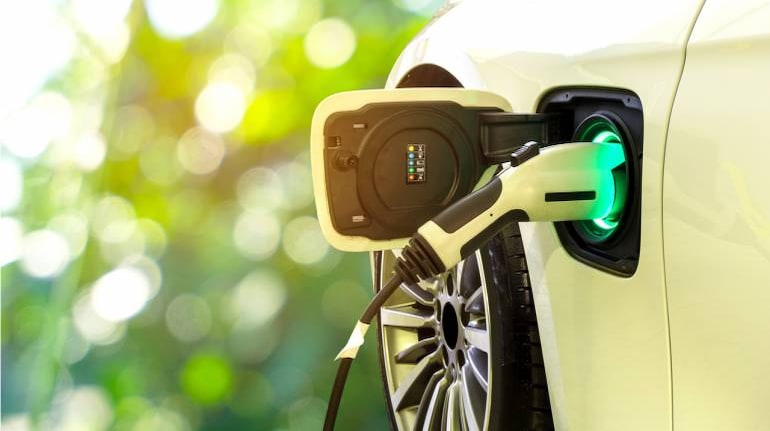



The purchasing cost of an electric vehicle may be higher than that of its petrol-powered equivalent. But it’s a certified fact that maintaining them costs a lot less money and effort. While the downside of this is that the switch to EV assembly lines will put a lot of ancillary parts providers and plant workers out of a job, the upside is that the consumer’s car ownership experience will be a lot more convenient. There’s no engine oil to change. In fact, there’s no engine, which whittles down the total number of moving parts on an EV, to roughly 20 as opposed to the 2000-plus moving parts on an internal combustion engine. There is no belt or chain to be serviced, no transmission fluid to be changed, no clogged-up valves or burnt clutch plate. There’s no gearbox to be serviced. You don’t even have to get an emission test done. So what does maintaining an EV entail?
Battery Maintenance
The battery is the central component of an EV, and as such, all maintenance measures, no matter how minimal, must begin there. Batteries have a limited life cycle, which can be prolonged with efficient management and timely charging. It must be noted that the typical lithium-ion battery comes with a sizable warranty period (which can vary according to the manufacturer). However, on an average, batteries are good for 160000 km before they need to be replaced. Contrary to conventional wisdom, car batteries are more resistant to damage than the lithium-ion batteries powering our phones. This is due to bespoke battery management systems designed by the manufacturer to protect your car’s battery.
That said, each battery can be subject to a limited number of charging cycles, the details of which must be made clear by the manufacturer. Car makers like Tesla, offer a warranty of over 8 years on the battery life of the Model 3.The Tata Nexon EV, for example, has a warranty of 8 years of 1.6 lakh km, however, the brand hasn’t revealed any data on the charging cycle limit Motorsport racer and automotive stunt performer Ronny Wechselberger, who recently purchased a Tesla Model 3, maintains that one should never leave an EV uncharged, if the battery level reaches 10%. This isn’t only because you might return to the car to find no battery charge left (especially in cold climates) but more importantly because a lithium-ion battery left uncharged with little to no juice in it, can be damaged in the process. Similarly, it’s best not to charge it all the way to 100% (certainly not when connected to a Fast Charger). In order to maintain the health and longevity of a lithium-ion battery at 90% and then unplug immediately. Batteries can also lose charge when the car is subject to extremely low temperature, so it’s best to find a relatively temperate spot to park your car, if possible.
Wechselberger also states that continuous fast charging can also prove detrimental to the battery’s health in the longer run, and that it’s best to charge it sufficiently using the A/C charger at home. What is inevitable is the fact that the longer you own an electric car, the shorter its range will become. However, this period far exceeds the ownership span of the average EV. Battery replacement is always an option, but it’s never cheap.
Tyres
EV tyres are prone to marginally greater levels of wear and tear given that the EVs weigh more than internal-combustion cars, thanks to the weight of the batteries, which are placed horizontally across the car’s floor. Low tyre pressure can also reduce an EVs range by 3% (according to the Royal Automobile Club).
Brakes
There’s more good news to be found here because EVs are equipped with regenerative braking. Regenerative braking uses the electric motor to slow the vehicle – a feat that works sort of like engine braking in an internal combustion car. Bottom line, this helps slow the car down when needed, reducing the load on the brakes and as a corollary, reducing the level of wear and tear of the brake disc and creating less brake dust. Regenerative braking also allows the vehicle to use excess kinetic energy and use it to put some charge back into the battery. “I’d say there’s 50% less brake use than in a normal car” says Ronny, who has done 8000 km on his Tesla Model 3.
Does it need servicing at the same intervals as a fossil-fuel car?
It’s always advisable to take your EV in for the occasional service, but it needn’t be as frequent as it does with an internal combustion car. What largely needs to be changed is brake fluid and perhaps the windscreen wipers. If the service centre caters primarily to ICE vehicles, ensure that a technician proficient with EVs is present. According to Wechselberger, one needs to perhaps change the air filter after 30000-odd km. “Teslas has not mandated any service” says Ronny,
Towing an EV
In the unlikely event of a breakdown, understand that no amount of pushing will get your EV back to life if the battery has been totally depleted. In such an instance, the EV must be towed, in which case it’s important to ensure that the drive wheels are kept off the road, and are not rolling. For example, if an electric motor is powering the front axle, make sure that it’s the rear wheels that are in contact with the road. In case both axles have an electric motor, make sure that your car is placed on a flatbed and then driven to the nearest charging point.
Discover the latest Business News, Sensex, and Nifty updates. Obtain Personal Finance insights, tax queries, and expert opinions on Moneycontrol or download the Moneycontrol App to stay updated!
Find the best of Al News in one place, specially curated for you every weekend.
Stay on top of the latest tech trends and biggest startup news.